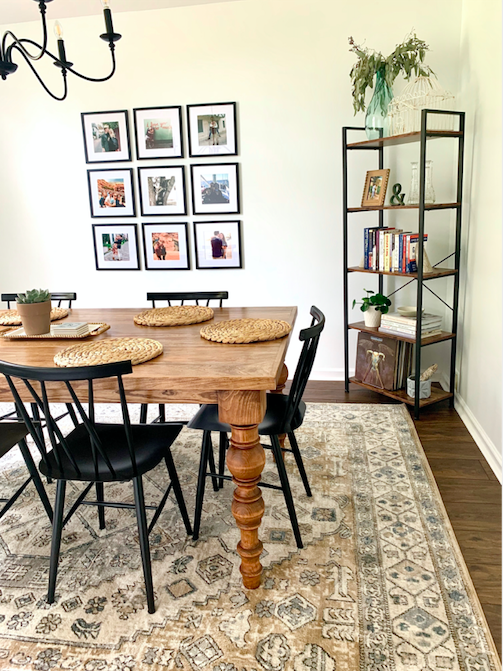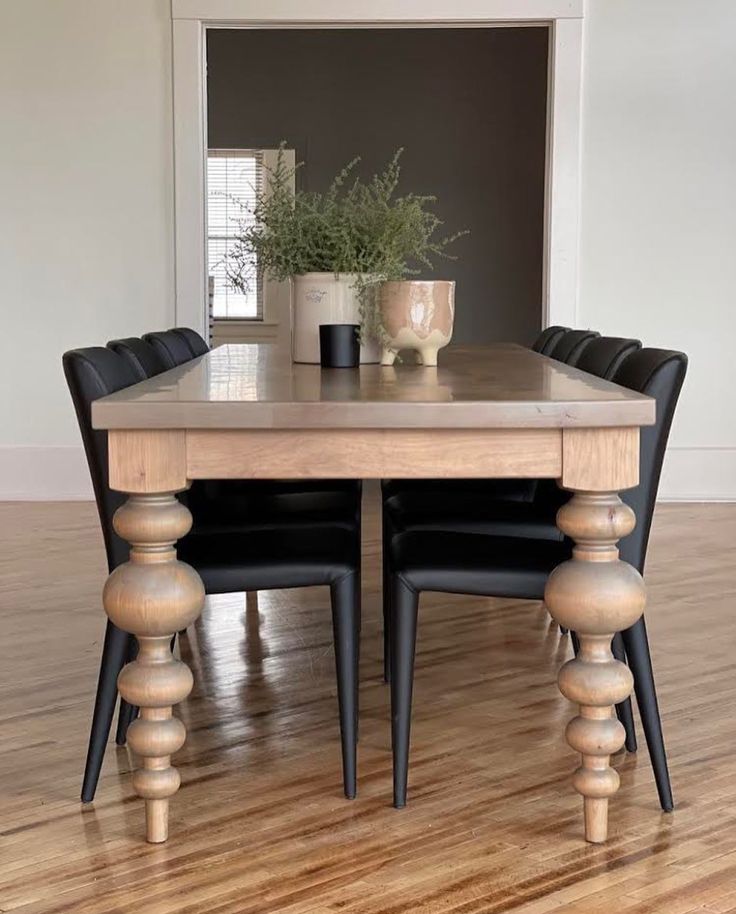Simple Steps to Replacing Old Dining Room Table Legs with New Ones
Simple Steps to Replacing Old Dining Room Table Legs with New Ones
Blog Article
From Conventional to Modern: Discover the Suitable Dining Area Table Legs for Your Design
The choice of eating area table legs plays an essential function in defining the general personality of your area, bridging the gap between conventional workmanship and modern visual appeals. While timeless layouts such as cabriole and turned legs evoke a feeling of classic refinement, modern designs like barrette and geometric options offer a possibility for striking aesthetic rate of interest. Evaluating the best balance between these styles needs a nuanced understanding of your existing design and individual taste. As you think about these aspects, the question continues to be: just how can you perfectly integrate these diverse leg styles to develop an unified dining experience?
Understanding Table Leg Styles
The range of eating space table leg styles can considerably influence both the visual appeals and performance of the area. Each leg style adds one-of-a-kind useful features and visual components, satisfying diverse style choices and use demands. Understanding these designs is critical for picking the ideal eating table that lines up with your general indoor style vision.
As an example, conical legs provide a tidy, classic look that can boost a space's elegance, while stand bases give security and take full advantage of legroom, making them optimal for smaller sized areas. Hairpin legs, a trademark of mid-century contemporary layout, present an industrial panache, permitting a ventilated, open feel. Likewise, trestle legs stimulate rustic charm, offering robust assistance and a sense of timelessness.
Furthermore, the option of products plays a substantial duty. Wood legs can bring heat and texture, whereas metal choices often communicate a smooth, contemporary ambiance. Eventually, understanding table leg designs is important for producing a natural dining area that reflects personal style while making sure practicality and convenience. By attentively thinking about these elements, you can enhance both the visual and practical charm of your dining room.
Standard Table Leg Options
When selecting dining space table legs, traditional alternatives usually embody ageless sophistication and craftsmanship. These designs show an abundant heritage and a dedication to top quality, making them ideal for those who appreciate traditional aesthetic appeals.
Among the most iconic typical leg styles is the cabriole leg, identified by its stylish curved form. This layout frequently features ornamental carvings and is most frequently found in Queen Anne and Chippendale furnishings. An additional prominent choice is the transformed leg, which boasts a series of smooth, rounded forms that give a traditional appearance while keeping stability.
Furthermore, the straight leg, while easy, provides a basic and durable framework that can blend flawlessly with a range of tabletop designs. For those drawn to ornate describing, claw-and-ball feet legs evoke a feeling of majesty and can serve as a spectacular prime focus in any kind of dining area.
Finally, pedestal bases, although not purely legs, supply a different conventional choice that permits sufficient legroom and can be wonderfully carved. Each of these typical leg styles contributes to the overall setting of a dining room, weding feature with visual allure.

Modern Table Leg Designs
Modern table leg layouts provide a diverse variety of styles that highlight clean lines and ingenious materials. These styles commonly prioritize functionality while working as striking focal points within a dining area. Minimalist visual appeals prevail, with legs crafted from materials such as metal, glass, and engineered timber, which add to a ventilated and modern feel.
One preferred style is the hairpin leg, identified by its why not try this out slim, tapered framework that offers stability without frustrating the tabletop (dining room table legs). This style is frequently found in mid-century contemporary furnishings and can effortlessly match various eating table shapes. An additional fad is the usage of geometric forms, where legs might tackle unbalanced or angular kinds, adding aesthetic interest and a touch of artistry

Mixing Designs for Special Spaces
Usually, property owners look for to produce distinct eating spaces that reflect their individual design by blending numerous layout elements. This approach permits the unification of diverse visual appeals, resulting in a harmonious yet distinctive environment. Combining a rustic wood table with smooth, modern steel legs can develop an attractive comparison that raises the space's total allure.
In addition, integrating vintage table legs with contemporary table tops can stimulate a sense of background while preserving a contemporary perceptiveness. Such combinations not just display individual preference but likewise motivate creativity, enabling property owners to curate an area that really feels both personal and welcoming.
Shade plays a vital role in this blending procedure; choosing table legs that complement or contrast with the existing shade plan can enhance aesthetic rate of interest. Whitewashed legs can soften the daring of a dark table surface, creating a balanced aesthetic.
Tips for Picking the Right Legs
Choosing the right table legs is necessary for achieving both functionality and aesthetic charm in your dining area. Begin by taking into consideration the total design of your space. Traditional settings gain from legs that feature intricate makings or turned designs, while contemporary spaces may require smooth, minimalist styles.
Following, evaluate the height and stability of the legs. dining room her comment is here table legs. Common table vary between 28 to 30 inches in elevation, so ensure the legs enhance this measurement for convenience. In addition, robust materials, such as wood or steel, can boost stability and longevity
Examine the leg shape too-- options include straight, tapered, or pedestal styles. Straight legs offer a traditional appearance, while tapered legs can add a touch of sophistication. Pedestal bases supply adequate legroom and are ideal for smaller rooms.
Final Thought
In summary, choosing the excellent dining room table legs requires careful factor to consider of both standard and contemporary styles. By balancing leg style, height, and product with the general design, a cohesive and welcoming environment can be achieved.
The variety of dining space table leg styles can significantly affect both the aesthetics and capability of the space. Inevitably, comprehending table leg styles is important for producing a cohesive dining area that shows personal style while ensuring usefulness and comfort.One of the most famous conventional leg designs is the cabriole leg, identified by its stylish bent shape. Straight legs offer a classic appearance, while tapered legs can include a touch of beauty.In recap, choosing the suitable dining area table legs requires mindful consideration of both contemporary and typical designs.
Report this page